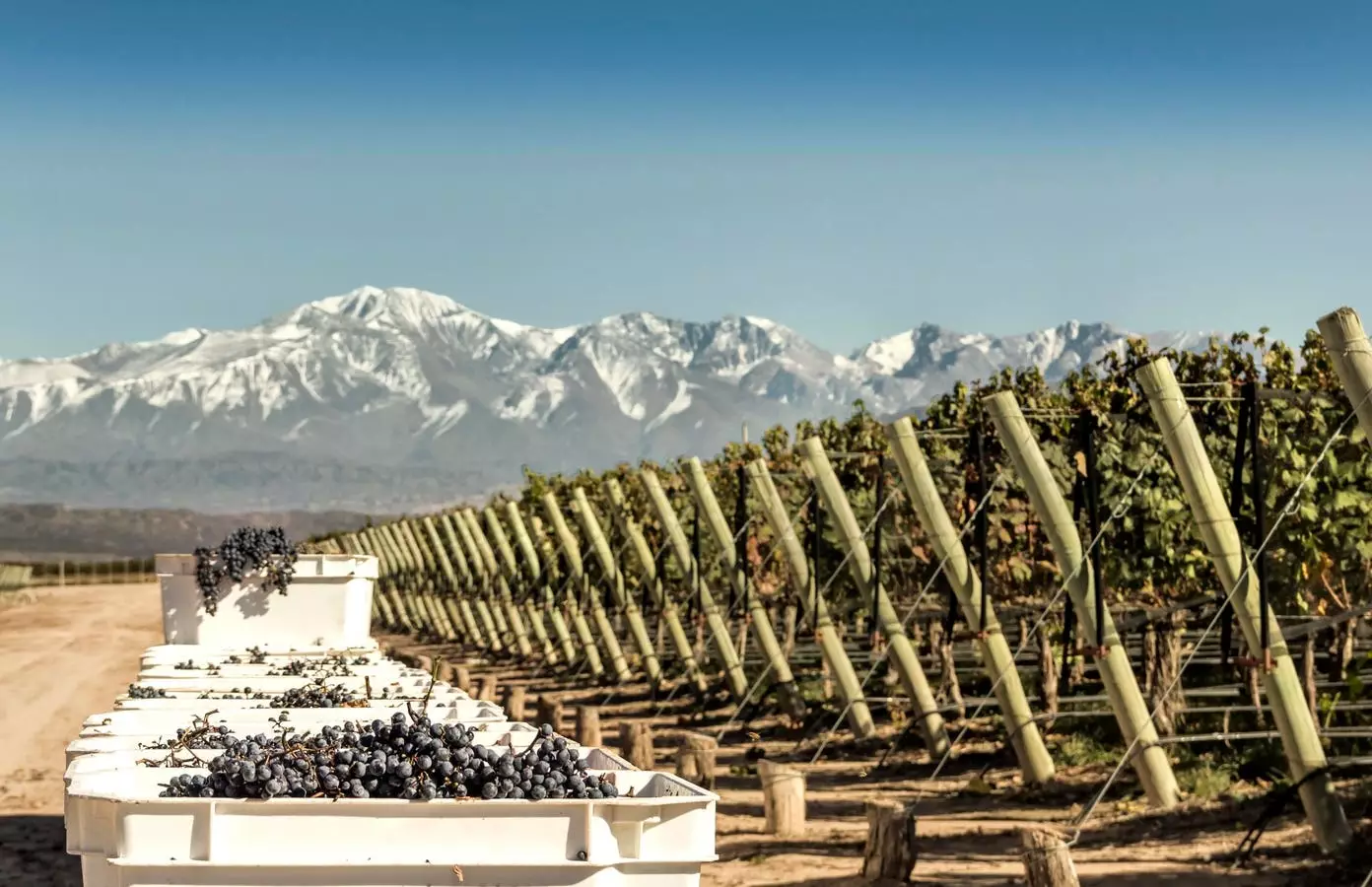Argentina is world-renowned for its Malbec, a varietal that captures the essence of the country’s diverse terroirs. However, the spotlight is increasingly turning to another grape that deserves just as much recognition: Cabernet Sauvignon. This well-established varietal is Argentina’s third most planted grape, and its emerging prominence is bringing delightful surprises to oenophiles around the globe. As this article reveals, Argentina has so much more to offer than its beloved Malbec.
Argentina is home to an extensive and varied landscape perfect for grape cultivation. Stretching over 1,500 miles from the sun-soaked northern region of Salta to the cool southern regions of Patagonia, the country boasts vineyards that are often situated at altitudes exceeding 4,500 feet. These elevations provide unique climatic conditions that are ideal for producing high-quality Cabernet Sauvignon.
The combination of cooler temperatures during the day and heightened sunlight exposure enables the grapes to achieve full phenolic ripeness. This ripeness is crucial for avoiding the undesired green bell pepper notes that can plague Cabernet Sauvignon when the grapes are picked prematurely. The continental climate—characterized by warm, sunny days and well-drained soils—facilitates not just growth but the synthesis of the complex flavors that define great wines.
Understanding Terroir: The Distinct Character of Argentine Cabernet Sauvignon
Different regions within Argentina offer unique expressions of Cabernet Sauvignon. For instance, the Luján de Cuyo region produces rich, ripe wines with softer tannins and bold fruit flavors, featuring notes of blackcurrant, plums, and cherries. In contrast, wines from the Uco Valley present an elegant structure; they showcase firm tannins and vibrant acidity intertwined with fragrant red and black fruits, accompanied by subtle floral and herbal characteristics.
Patagonia, on the other hand, offers a different profile altogether, yielding refined, fresh wines marked by delicate earthy nuances and a cooler array of fruit flavors. The responsibility for these variations lies with the unique terroirs, which significantly influence the grape-growing conditions and the final flavor profile of the wines. Each region’s climate, soil composition, and elevation contribute to the overall character of the Cabernet Sauvignon, showcasing a splendid diversity within a single varietal.
The evolution of Argentine Cabernet Sauvignon does not rest solely on climatic and geographic advantages; it is also supported by innovative winemaking practices. Wineries such as Domaine Bousquet in Gualtallary are at the forefront of this evolution. They have recently achieved the Regenerative Agriculture Certification, highlighting their commitment to vineyard health through sustainable farming methods.
The winery utilizes cover crops to create a cooler environment for the vines, allowing the grapes to maintain their vitality and flavor integrity. According to lead winemaker Rodrigo Serrano, the singularity of Gualtallary provides Cabernet Sauvignon the necessary environment to fully mature, resulting in wines with remarkable structure and an expression that captivates consumers upon tasting.
Argentina’s winemaking industry is enriched by the diverse backgrounds of its vintners, many of whom are descendants of 19th-century European immigrants. These winemakers brought traditional winery techniques from France, Spain, and Italy, infusing their knowledge and culture into the local wine landscape. As winemaker Karim Mussi of Altocedro Winery notes, the workforce’s dedication and hard work are key factors in Argentina’s growing reputation as a wine-producing country.
This blend of Old World knowledge with New World innovation creates a dynamic environment for winemaking, allowing for a fusion that respects tradition while embracing modern approaches. The people behind the wines are just as vital to the story as the land and climate; it’s this passion that ultimately contributes to the exceptional quality found in Argentine Cabernet Sauvignon.
For consumers seeking high-quality Cabernet Sauvignon without the premium price tag associated with California counterparts, Argentina offers a remarkable solution. With a range of styles and expressions, the country showcases an impressive diversity that caters to all tastes. As Patricia Ortiz, owner of several Argentine wineries, highlights, Argentine Cabernet is ideal for those who appreciate age-worthy wines with great structure and complexity akin to fine Bordeaux—yet at a fraction of the cost.
Arguably, one of Argentina’s best-kept secrets, this varietal is garnering interest and acclaim, particularly in the U.S. market—currently the largest importer of Argentine wine. While Malbec remains the poster child of Argentinian wine, the growing visibility of Cabernet Sauvignon promises an enriching experience for wine enthusiasts eager to explore beyond the conventional.
Argentina’s Cabernet Sauvignon potential is immense, offering a plethora of choices that continue to delight and surprise. With captivating terroirs, innovative agricultural practices, a diverse winemaking community, and unbeatable values, these wines deserve serious attention. With the potential to rival Malbecs, Argentine Cabernet Sauvignon is truly a hidden gem waiting to be discovered.


Leave a Reply